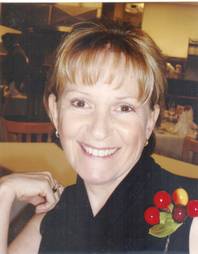Wednesday, June 17, 2009 | 2:29 p.m.

Stefani Evans
I know not to take shortcuts. I know to seek out the best source for every fact. So why do I still trip myself?
The latest incident involved using a typed extract of death notices, rather than going to the original New York City newspaper source for the 1825 death of Francis Johnson. Gertrude A. Barber's typed extracts of death notices from the New York Evening Post for the Country fill 55 volumes and cover notices published 1801 to 1890. Barber typed the volumes and made several carbon copies of each from 1933 to 1947.
Barber's extracts are a valuable guide for locating the original notice; likely she never intended for researchers to use them as sources. Genealogists can explore the Barber collection through the New England Historic Genealogical Society Web site (library.nehgs.org) or through Ancestry.com.
The multiple carbon copies pose a problem endemic to the Barber collection and others of its ilk. Those of us who remember carbon copies understand that the typewriter's keystrokes produced crisp images on the original and on the first carbon copy. But each layer of carbon paper and typing paper produced increasingly blurred images.
In the case of the 1825 death of the elder Francis Johnson, one fairly sharp digital image (probably a first or second carbon copy) appeared to state that Johnson died at the age of 63 years. The other online copy is likely a more distant carbon copy; the letters and numbers are somewhat fuzzy, and the reader cannot determine if Johnson's age was 63 years or 65 years.
Volume 7 of Barber's Death Notices from the New York Evening Post notes the following:
Tuesday 6 December 1825
Nov. 9, Francis Johnson, 63 [or 65]
When genealogists cannot easily locate the newspapers, we note the index entries as a prelude to locating the original sources.
If we rely on indexes we risk passing along bad information. For example, the fuzzy index entry led me to assume that Francis Johnson was 65 when he died, probably in New York City. His age at death mattered because it calculated to his probable birth in about 1760.
I fully intended to obtain the original death notice "someday," but I had not taken the extra trouble to do so when I wrote an article on another topic that happened to include Johnson's date of birth and death. Fortunately, sharp-eyed editors checked my "source" and questioned whether Johnson was 63 or 65 at his death.
The Newberry Library in Chicago holds original bound volumes of the New-York Evening Post for the Country, including the year 1925. The actual death notice that appeared Tuesday, December 6, 1825, reads as follows: "On the 9th of November last, on his passage from London, Mr. Francis Johnson, aged 63 years, an old and respectable inhabitant of this city."
The one-sentence notice validates the date of death Barber noted and notes Johnson's age and place of death—not New York City, but on a ship in the Atlantic Ocean. The item stipulates that, although he died in transit from England, Johnson was "an old and respectable inhabitant" of New York City.
Most importantly, the death notice explains why Johnson's death was not recorded in New York City death registers, and it is the only contemporary source I am likely to find that records his 1825 death.
With gratitude to Jonathan Bloom of Chicago for providing photographic images of the original death notice. Also to editors who questioned the source of my information and thereby reminded me that good intentions to go to the best source do not substitute for actually doing it.
Stefani Evans is a board-certified genealogist and a volunteer at the Regional Family History Center. She can be reached c/o the Home News, 2275 Corporate Circle, Third Floor, Henderson, NV 89074, or [email protected].

Join the Discussion:
Check this out for a full explanation of our conversion to the LiveFyre commenting system and instructions on how to sign up for an account.
Full comments policy